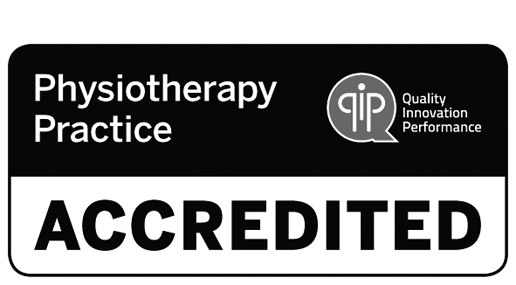Stress, Anxiety & Pelvic Pain: A Challenging Combination
We have noticed a recent dramatic increase in pelvic pain presentations that appear to be triggered by higher levels of stress and anxiety during the COVID-19 pandemic. When a patient presents with chronic pain, it is no longer acceptable to view them through a narrow lens. More and more research now supports what we have long known, that chronic pain is driven by a sensitised nervous system. Unfortunately, stress and anxiety feed directly into sensitised nervous systems, further heightening the pain experience1.
How Does Stress Affect Pain?
Humans are not built to cope with constant stress. Among other things, chronic stress can lead to neuroendocrine dysfunction, and hypervigilance in the thalamus, amygdala, hypothalamus, and anterior cingulate cortex1. Hypervigilance in the central nervous system has a negative effect on pain. Pain is felt when the brain decides that the perceived threat of a current situation is greater than the perceived safety. When the brain is in a hypervigilant state, this threshold is lower, meaning pain is more easily experienced.
Biopsychosocial Approach To Treating Pain
Adopting a biopsychosocial approach to treating pain, including screening for stress and anxiety, is now considered best practice. But what is the best way to do this? Many of our physiotherapists have recently completed Carolyn Vandyken’s on-line course ‘A Biopsychosocial Framework for Treating Pelvic Pain’, and it has revolutionised our practice. Carolyn is a Canadian Pelvic Health Physiotherapist and is widely published in the pelvic health field. She has written a blog article about treating with a Biopsychosocial perspective, and I have included an excerpt below:
Taking a Biopsychosocial Perspective: Does it Matter?
By Carolyn Vandyken
“There are two camps in treating pain. The tissue-based camp of treatment providers treat the tissues alone believing that there must be something biomedically wrong with the tissues; and the psychology-based camp believes that chronic pain is anchored in the psychosocial piece and we just have to get patients to think differently or behave differently so that their pain will change.”
“What if we treat the whole person- their unhealthy tissues, and their thoughts, beliefs, fears and tendencies to over-emphasize the importance of their problem? This biopsychosocial approach needs to happen AFTER we educate patients about pain biology, so that they truly understand how their pain system has become hijacked, and how they can claim it back again. The goal of treatment is to find the BIO-PSYCHO-SOCIAL drivers or threats that are causing the nervous system to stay sensitised and in a hyper-protective mode. No blame is shifted to the patient since the nervous system has structurally changed and adapted to create this pain state. Neuroplasticity means that we have the capability of changing the nervous system in both directions- for better and worse. Don’t forget that the brain is an organ too. It is plastic, and it can change. Treatment of the body to address tension and weakness will help to change the inputs to the nervous system and should not be ignored; however, the framework of the tissue-based treatment needs to be accurate with an emphasis on self-efficacy, which is a well-supported tenant in persistent pain research. The brain needs to be understood at a deep level by both the patient and the practitioner so that it can be targeted appropriately for change. The brain can change, and so can the body’s tissues.”
“Within a biopsychosocial framework using pain biology education as the glue, we can develop meaningful changes to the nervous system, allowing it to do its job of protecting us from “actual” harm immediately, and quieting down the system that is over-protecting us from “potential” harm 24/7. This sensitised nervous system is a huge contributor to persistent pain, and it can change. Give your patient hope that they can be well again.”
Psychologically-Informed Physiotherapy
Carolyn’s course has given us a new framework for treating chronic pelvic pain, and has made our experience in treating these complex patients much less overwhelming. We are now using a suite of validated screening tools for anxiety, depression, catastrophisation, fear, injustice and self-efficacy. These help us understand what is driving a person’s increased sensitisation, which allows us to give a structured and individualised treatment plan based on their self-reported outcomes. A 2020 Delphi study2 from the University of NSW highlighted the importance of the psychological treatments we are integrating into our practice, including pain neuroscience education, graded exposure and relaxation.
Reducing Fear, Reducing Pain
If you are noticing that your pain patients are reporting exacerbated symptoms, have a conversation with them about how things happening in their lives (a global pandemic!!) will heighten their pain experience. You may also like to share our relaxation or mindfulness recordings with them. Once patients understand why their pain is flared, their fear is reduced, and their pain levels will in-turn decrease.
References
1 Hannibal KE, Bishop MD. Chronic stress, cortisol dysfunction, and pain: a psychoneuroendocrine rationale for stress management in pain rehabilitation. Phys Ther. 2014;94:1816–182
2 Sharpe, L., Janes, E., Ashton-James, C, Nicholas, M & Refshauge, K. (2020). Necessary components of psychological treatment in pain management programs: A Delphi study. European Journal of Pain. DOI: 10.1002/ejp.1561. [Epub ahead of print]
May 2020





